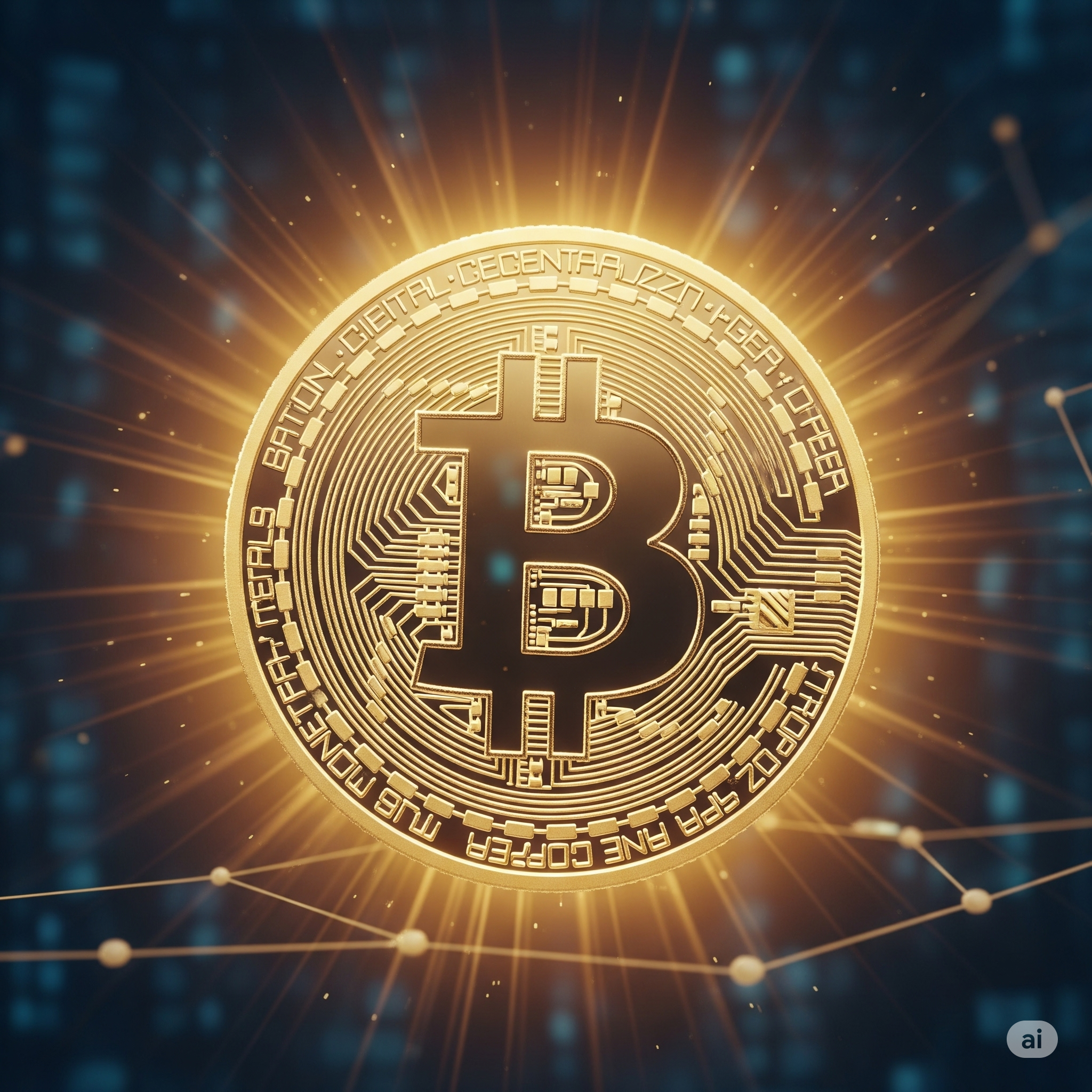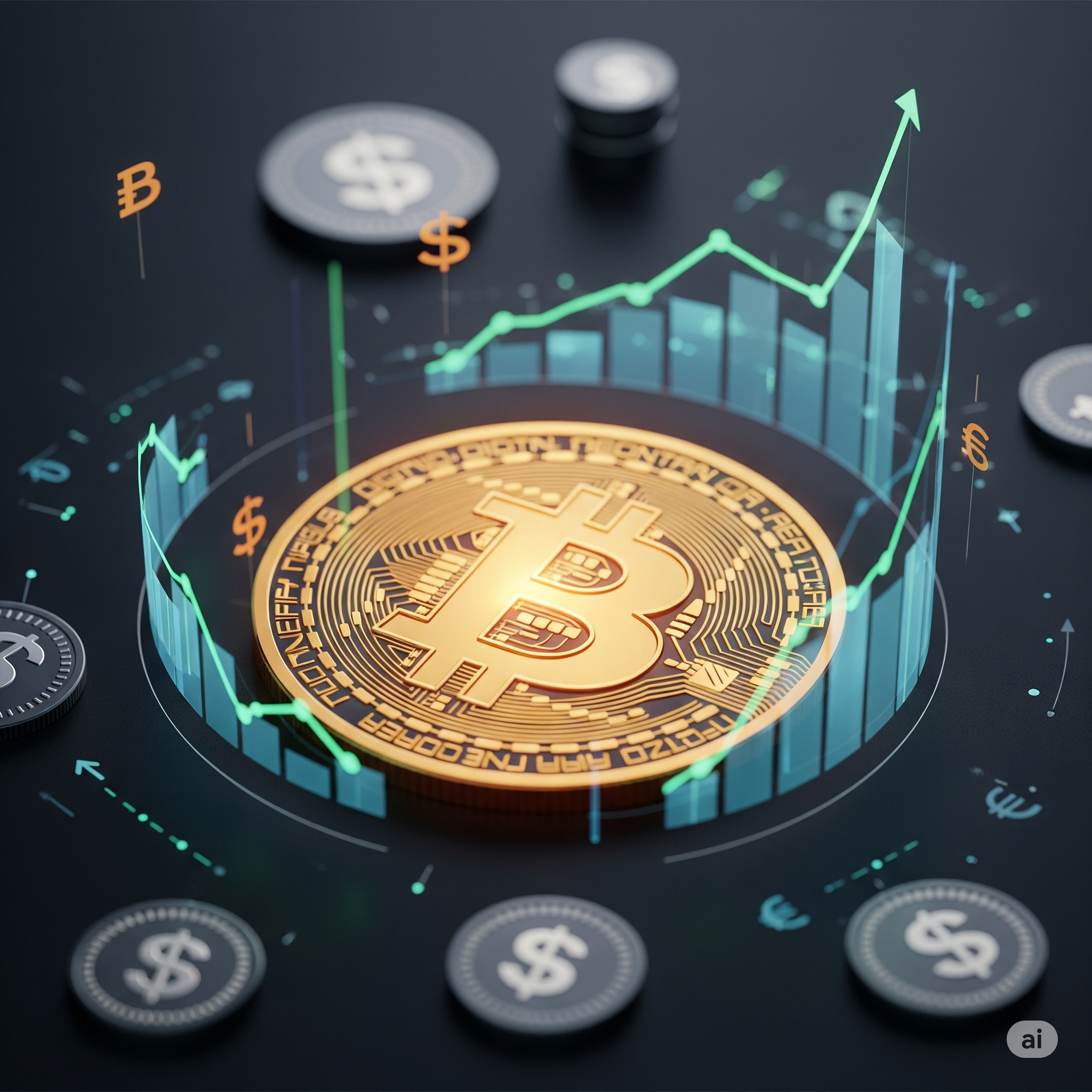Introduction
Bitcoin is one of the most revolutionary innovations of the 21st century. Often referred to as digital gold, it is the first decentralized digital currency that allows people to send and receive money over the internet without the need for banks or intermediaries. Launched in 2009 by a mysterious person or group under the pseudonym Satoshi Nakamoto, Bitcoin introduced the world to the concept of blockchain technology, a system that ensures transparency, security, and decentralization.
This article provides a complete overview of Bitcoin: what it is, how it works, its underlying technology, advantages, limitations, and its impact on the global economy.
What is Bitcoin?
Bitcoin (BTC) is a digital currency that exists entirely online. Unlike physical money such as coins or paper notes, Bitcoin has no tangible form. Instead, it exists as a record on a distributed ledger called the blockchain.
Key features of Bitcoin:
- Decentralized – No government, central bank, or company controls Bitcoin.
- Peer-to-Peer (P2P) – Transactions happen directly between users without intermediaries.
- Limited Supply – Only 21 million bitcoins will ever exist, making it scarce like gold.
- Cryptographically Secure – Transactions are verified by cryptography, making them resistant to fraud.
- Global – Bitcoin can be used by anyone with internet access, regardless of borders.
History of Bitcoin
- 2008: A whitepaper titled “Bitcoin: A Peer-to-Peer Electronic Cash System” was published by Satoshi Nakamoto.
- 2009: Bitcoin network went live. The first block, known as the Genesis Block, was mined.
- 2010: The first real-world Bitcoin transaction took place when Laszlo Hanyecz bought two pizzas for 10,000 BTC.
- 2011-2013: Bitcoin started gaining attention as alternative money. Other cryptocurrencies (Litecoin, Ripple) emerged.
- 2017: Bitcoin reached nearly $20,000, sparking global interest.
- 2021: Bitcoin hit an all-time high of over $68,000 before facing market corrections.
- Today: Bitcoin is recognized worldwide, with some countries like El Salvador adopting it as legal tender.
How Bitcoin Works
Bitcoin operates on a combination of cryptography, blockchain, and decentralized networking.
1. Blockchain Technology
The blockchain is the foundation of Bitcoin. It is a public digital ledger that records every Bitcoin transaction.
- Transactions are grouped into blocks.
- Each block is linked to the previous one, forming a chain.
- Once added, transactions cannot be altered or deleted, ensuring immutability.
2. Bitcoin Mining
Mining is the process by which new bitcoins are created and transactions are verified.
- Miners use powerful computers to solve complex mathematical puzzles.
- Once solved, a new block is added to the blockchain.
- Miners are rewarded with new bitcoins (block reward) and transaction fees.
Currently, the block reward is 6.25 BTC (as of 2025), and this halves approximately every four years in an event called Bitcoin Halving. By 2140, all 21 million bitcoins will be mined.
3. Bitcoin Wallets
To use Bitcoin, individuals need a wallet. A Bitcoin wallet stores private keys (used to sign transactions) and public addresses (used to receive money).
- Hot Wallets: Online wallets connected to the internet (more convenient, less secure).
- Cold Wallets: Offline wallets like hardware or paper wallets (very secure).
4. Transactions
When someone sends Bitcoin:
- The transaction is broadcast to the network.
- Miners verify the transaction and include it in a block.
- Once confirmed, the transaction becomes permanent.
Bitcoin Supply and Scarcity
Unlike traditional money, Bitcoin has a fixed supply of 21 million coins. This scarcity makes it similar to precious metals like gold.
- Inflation Control: Since supply is limited, governments cannot print more Bitcoins, preventing inflation.
- Halving Events: Approximately every 210,000 blocks (around 4 years), mining rewards are halved.
- 2009: 50 BTC per block
- 2012: 25 BTC
- 2016: 12.5 BTC
- 2020: 6.25 BTC
- 2024: 3.125 BTC
- Continues until all coins are mined
This mechanism ensures Bitcoin becomes increasingly scarce over time.
Advantages of Bitcoin
- Decentralization – No single authority controls Bitcoin.
- Transparency – All transactions are publicly recorded on the blockchain.
- Security – Strong cryptography prevents fraud and counterfeiting.
- Low Fees – Compared to traditional banking or remittances, Bitcoin offers cheaper transfers.
- Borderless Payments – Anyone, anywhere can send or receive Bitcoin instantly.
- Hedge Against Inflation – Fixed supply makes Bitcoin a store of value.
- Ownership Control – Users have full control over their funds (no bank freezes).
Challenges and Limitations
- Volatility – Bitcoin’s price fluctuates dramatically.
- Scalability – The network can handle only about 7 transactions per second, slower than Visa or Mastercard.
- Energy Consumption – Mining consumes large amounts of electricity, raising environmental concerns.
- Regulatory Uncertainty – Many governments are still uncertain about Bitcoin regulations.
- Irreversible Transactions – Mistakes cannot be undone; once sent, Bitcoin cannot be retrieved without the recipient’s consent.
- Adoption Barriers – Not everyone is familiar with using Bitcoin or comfortable with its technical aspects.
Bitcoin vs. Traditional Money
| Feature | Bitcoin | Traditional Money (Fiat) |
|---|---|---|
| Control | Decentralized | Controlled by governments and central banks |
| Supply | Limited (21M) | Unlimited (can be printed) |
| Storage | Digital wallets | Banks, cash, cards |
| Transaction Speed | Minutes (depends on confirmations) | Instant in many cases |
| Inflation | Resistant due to limited supply | Subject to inflation |
| Accessibility | Anyone with internet access | Requires banking infrastructure |
Bitcoin as Digital Gold
Many experts call Bitcoin “digital gold” because of its scarcity and role as a store of value. Like gold, Bitcoin:
- Is limited in supply.
- Requires effort (mining) to obtain.
- Is divisible and portable.
- Can act as a hedge against inflation and currency devaluation.
However, unlike gold, Bitcoin is easier to transfer globally, making it more practical in the digital age.
Use Cases of Bitcoin
- Investment – Many people buy Bitcoin as a long-term investment (HODLing).
- Payments – Some businesses accept Bitcoin for goods and services.
- Remittances – Cheaper and faster than traditional remittance services.
- Store of Value – Protection against inflation and unstable currencies.
- Smart Contracts (via Lightning Network) – Enables faster and scalable transactions.
- Micropayments – Small transactions like tips or digital services.
The Future of Bitcoin
Bitcoin continues to evolve. Possible future trends include:
- Greater Institutional Adoption – More banks and companies integrating Bitcoin.
- Regulation – Governments may introduce clearer rules to manage Bitcoin usage.
- Improved Technology – Scaling solutions like the Lightning Network may allow millions of transactions per second.
- Global Currency Role – Some countries may adopt Bitcoin as legal tender, especially those with weak local currencies.
- Integration with Finance – Bitcoin ETFs, derivatives, and digital banking systems may expand access.
Bitcoin and Regulation
Governments around the world have different views on Bitcoin:
- Supportive Countries: El Salvador, Switzerland, Singapore.
- Cautious Countries: USA, UK, Canada (regulation-focused).
- Restrictive Countries: China, Bangladesh, Algeria (banned usage).
The regulatory environment will play a big role in shaping Bitcoin’s future.
Myths and Misconceptions
- Bitcoin is Anonymous – It is actually pseudonymous. Transactions are public but linked to wallet addresses, not names.
- Bitcoin is Illegal – While some countries ban it, in most places Bitcoin is legal.
- Bitcoin Can Be Hacked – The Bitcoin network itself has never been hacked; however, exchanges and wallets can be compromised.
- Unlimited Bitcoin Mining – Only 21 million coins will ever exist.
- Bitcoin is a Bubble – While highly volatile, Bitcoin has survived for more than a decade, growing stronger each cycle.
Educational Importance of Bitcoin
Understanding Bitcoin is crucial in today’s digital economy:
- It teaches the fundamentals of cryptography, blockchain, and decentralization.
- It highlights the importance of financial literacy in the modern world.
- It introduces new possibilities in economics, finance, and technology.
- It demonstrates how trustless systems can change industries beyond money, including healthcare, supply chains, and governance.
Conclusion
Bitcoin is far more than just digital money—it is a technological revolution that challenges the traditional financial system. By combining cryptography, decentralization, and scarcity, Bitcoin provides a new form of value exchange that is global, secure, and independent of central authorities.
Despite challenges such as volatility, regulation, and energy concerns, Bitcoin continues to gain acceptance and recognition worldwide. For some, it is an investment; for others, a payment system; and for many, a symbol of financial freedom.
As technology advances and adoption increases, Bitcoin’s role in shaping the future of money is undeniable. Understanding Bitcoin today equips us with the knowledge to navigate tomorrow’s digital economy.




